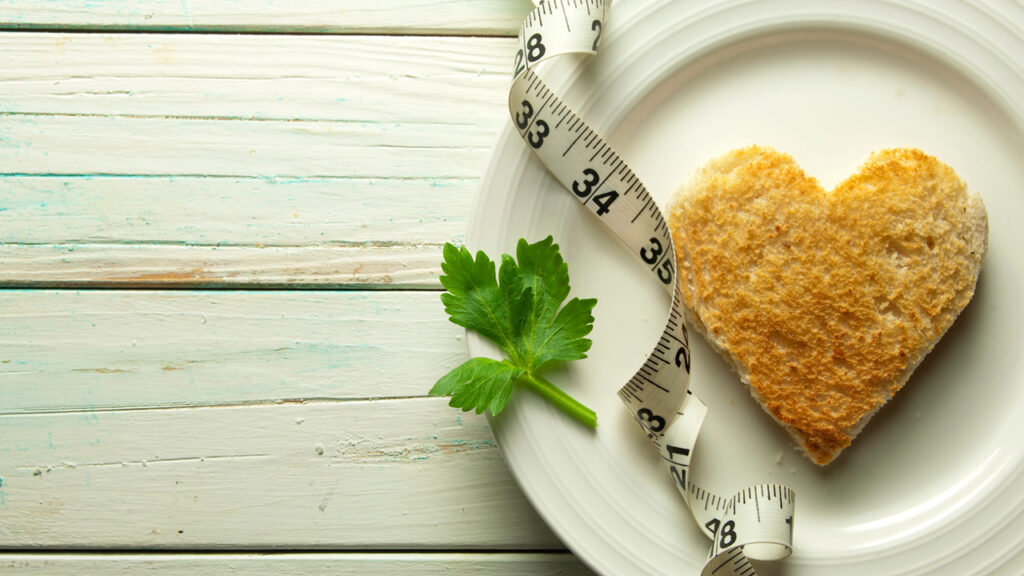Anorexia nervosa is a serious mental illness that can have deadly consequences. People with anorexia often have a distorted view of their own bodies, which leads them to starve themselves even though they are already underweight. While there is no one “right” way to eat if you have anorexia, there are some foods that are safer and more nutritious than others. In this blog post, we will discuss the 12 safest and most nutritious foods for those with anorexia.
Defining Anorexia
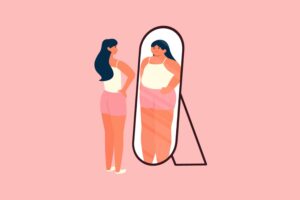 Anorexia nervosa, also simply called anorexia, is a serious mental illness that causes people to restrict their food intake and become dangerously underweight. Anorexia is much more than simply not wanting to eat. It is a complex condition that can have many psychological, physical, and social consequences. People with anorexia often have a distorted view of their own bodies, which leads them to starve themselves even though they are already underweight.
Anorexia nervosa, also simply called anorexia, is a serious mental illness that causes people to restrict their food intake and become dangerously underweight. Anorexia is much more than simply not wanting to eat. It is a complex condition that can have many psychological, physical, and social consequences. People with anorexia often have a distorted view of their own bodies, which leads them to starve themselves even though they are already underweight.
While anorexia is most common in teenage girls and young women, it can affect people of any age, gender, or background. Anorexia is a serious condition that can be deadly if not treated. People with anorexia often need professional help to recover.
Anorexia Safe Foods Examples
Before listing things that are safe for someone with anorexia to eat, let us understand the concept of “anorexia-safe foods”. When one is struggling with anorexia, the priority is not to gain weight. The priority is to stop the cycle of restriction and malnutrition. So, anorexia-safe foods are those that will provide enough nutrition to meet the person’s needs without triggering any further weight loss.
It is necessary to note that there is no one-size-fits-all approach to eating if you have anorexia. The foods that are safe for one person may not be safe for another. This is because every person’s experience with anorexia is unique. That said, there are some foods that are generally safe and nutritious for people with anorexia. Here are 12 examples.
Whole grains and legumes
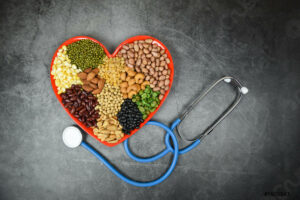 Starting off with whole grains, these are packed with nutrients like fiber, vitamins, and minerals. They also tend to be very filling, which can be helpful for people who are struggling to eat enough. Some safe and nutritious whole grain options include:
Starting off with whole grains, these are packed with nutrients like fiber, vitamins, and minerals. They also tend to be very filling, which can be helpful for people who are struggling to eat enough. Some safe and nutritious whole grain options include:
- oats
- quinoa
- brown rice
- barley
Legumes are another great option for people with anorexia. They are high in protein, fiber, and nutrients like iron and potassium. Legumes can also help to keep you full and satisfied after eating. Some safe and nutritious legume options include:
- beans
- lentils
- peas
- chickpeas
All these can be incorporated into a variety of recipes from any type of cuisine. Some common ways to utilize grains and legumes in meals include:
- overnight oats
- quinoa bowls
- rice and beans
- sandwich/wrap
- bean soup
- lentil curry
Proteins
Proteins are rightly called the “building blocks of life”. They are essential for our bodies to function properly. Proteins are made up of amino acids, which our bodies use to create new tissues, enzymes, and hormones. Proteins are also necessary for the repair of damaged tissues. For people with anorexia, proteins are especially important because they help to preserve muscle mass and prevent further weight loss. Some safe and nutritious protein options include:
- chicken
- fish
- eggs
- tofu
- dairy products
- tempeh
- nuts and seeds
These can be cooked in a variety of ways and incorporated into a variety of recipes from any type of cuisine. Some common ways to utilize proteins in meals include:
- chicken stir-fry
- fish tacos
- scrambled eggs
- tofu scramble
- veggie burger
- nut butter sandwich
Carbohydrates
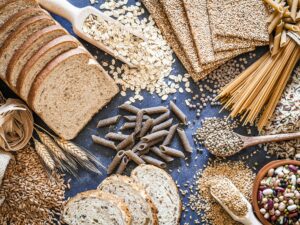 Also popular by its short form carbs, these are found in a wide variety of foods, including:
Also popular by its short form carbs, these are found in a wide variety of foods, including:
- bread
- pasta
- rice
- cereal
- sweet potatoes
- bananas
- butternut squash
- oats
- beets
Carbohydrates are an important source of energy for our bodies. They are also necessary for the proper functioning of our brains and nervous systems. For people with anorexia, carbs can help to restore energy levels and prevent further weight loss. Carbohydrates can be cooked in a variety of ways and incorporated into a variety of recipes from any type of cuisine. Some common ways to utilize carbs in meals include:
- sweet potato fries
- banana bread
- butternut squash soup
- oatmeal
- beet salad
Calcium
Calcium for anorexic people is important for the development and maintenance of strong bones. It is also necessary for proper muscle function, nerve function, and blood clotting. For people with anorexia, calcium can help to prevent further bone loss and weight loss. Some safe and nutritious calcium-rich options include:
- dairy products
- leafy green vegetables
- tofu
- soy milk
- oranges
Calcium can be incorporated into a variety of recipes from any type of cuisine. Some common ways to utilize calcium in meals include:
- a spinach and cheese omelet
- tofu stir-fry
- orange juice
Fruits
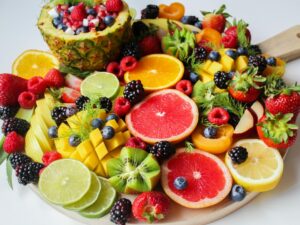 Fruits are a go-to source of nutrients like vitamins, minerals, and fiber. They are also a great source of natural sugar, which can help to boost energy levels. For people with anorexia, fruits can help to prevent further weight loss. Some safe and nutritious fruit options include:
Fruits are a go-to source of nutrients like vitamins, minerals, and fiber. They are also a great source of natural sugar, which can help to boost energy levels. For people with anorexia, fruits can help to prevent further weight loss. Some safe and nutritious fruit options include:
- apples
- oranges
- bananas
- berries
- peaches
Fruits can be eaten as is, or they can be incorporated into a variety of recipes from any type of cuisine. Some common ways to utilize fruits in meals include:
- fruit salad
- apple pie
- orange juice
- banana bread
- berry smoothie
- peach cobbler
Vegetables
Just like fruits, vegetables also have a high water content and are packed with nutrients. They are an excellent source of vitamins, minerals, and fiber. Vegetables can be eaten raw, cooked, or steamed. Some of the best vegetables for people with anorexia include:
- carrots
- celery
- cucumber
- kale
- spinach
- tomatoes
These can also be consumed by giving delicious and innovative twists such as:
- slicing them into thin strips and adding them to a salad or sandwich
- making a healthy vegetable soup
- grilling or roasting them as a side dish
- adding them to a smoothie or juice
Nuts and seeds
These are the most wholesome and nutritious foods that one can have and are perfect for people with anorexia. They contain a good amount of protein, fiber, healthy fats, vitamins, and minerals. Some of the best nuts and seeds for people with anorexia include:
- almonds
- walnuts
- pumpkin seeds
- sunflower seeds
- flaxseeds
- chia seeds
Nuts and seeds can be eaten as is, or they can be incorporated into a variety of recipes from any type of cuisine. Some common ways to utilize nuts and seeds in meals include:
- adding them to a salad or yogurt
- making a healthy nut butter sandwich
- using them as a topping on oatmeal or pancakes
- blending them into a smoothie
- making homemade granola bars
Dairy (or alternatives)
 Dairy is a great source of calcium, protein, and other essential nutrients. For people with anorexia, dairy can help to prevent further weight loss. It also helps to maintain strong bones and muscles. Some safe and nutritious dairy options include:
Dairy is a great source of calcium, protein, and other essential nutrients. For people with anorexia, dairy can help to prevent further weight loss. It also helps to maintain strong bones and muscles. Some safe and nutritious dairy options include:
- milk
- cream
- yogurt
- cheese
- butter
Dairy alternatives are also a great option for people with anorexia who have lactose intolerance or are vegan. These alternatives carry many of the same nutrients as dairy products. Some safe and nutritious dairy alternatives include:
- soy milk
- almond milk
- coconut milk
- rice milk
Dairy (or alternatives) can be incorporated into a variety of recipes from any type of cuisine. Some common ways to utilize dairy (or alternatives) in meals include:
- adding milk to cereal or oatmeal
- making a smoothie with yogurt and fruit
- using cheese in a sandwich or on top of crackers
- spreading butter on toast
Fats
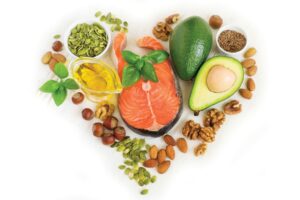 Fats are an essential part of a healthy diet. They are necessary for the absorption of vitamins and minerals. Fats also help to preserve body heat and protect our organs. For people with anorexia, fats can help to restore energy levels and prevent further weight loss. It is advisable for people with anorexia to avoid trans fats and saturated fats, which are found in processed foods. Some safe and nutritious fat options include:
Fats are an essential part of a healthy diet. They are necessary for the absorption of vitamins and minerals. Fats also help to preserve body heat and protect our organs. For people with anorexia, fats can help to restore energy levels and prevent further weight loss. It is advisable for people with anorexia to avoid trans fats and saturated fats, which are found in processed foods. Some safe and nutritious fat options include:
- avocados
- oils (olive, coconut, etc.)
- nut butters (peanut, almond, etc.)
- seeds (flax, chia, etc.)
These can be incorporated into a variety of recipes from any type of cuisine. Some common ways to utilize fats in meals include:
- avocado toast
- oils and vinegar salad dressing
- nut butter and jelly sandwich
- flaxseed muffins
Poultry
This may only be exclusive to people who eat non-vegetarian. Poultry is a great source of protein, vitamins, and minerals. It is also low in fat and calories. For people with anorexia, poultry can help to restore energy levels and prevent further weight loss. Some safe and nutritious poultry options include:
- chicken
- turkey
- fish
- duck
These can be incorporated into a variety of recipes from any type of cuisine. Some common ways to utilize poultry in meals include:
- grilling chicken breasts
- baking turkey meatballs
- making a soup with chicken broth
- fish and chips
There are alternatives to these options for vegetarians/vegans. These include:
- tofu
- tempeh
- seitan
- vegetables
These can be incorporated in similar ways to the above options. Some common ways to utilize these in meals include:
- stir-frying tofu with vegetables
- making a vegetable soup
- baking tempeh and vegetable burgers
- grilling vegetables
Fluids
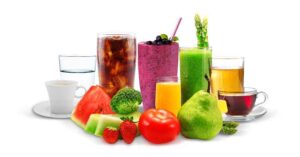 In addition to solid foods, fluid intake is also important for people with anorexia. Fluids help to prevent dehydration and maintain good kidney function. They also help to transport nutrients throughout the body. Some safe and nutritious fluid options include:
In addition to solid foods, fluid intake is also important for people with anorexia. Fluids help to prevent dehydration and maintain good kidney function. They also help to transport nutrients throughout the body. Some safe and nutritious fluid options include:
- water
- milk
- fruit juices
- vegetable juices
These can be consumed as is, or they can be incorporated into a variety of recipes. Some common ways to utilize these in meals include:
- adding fruit juice to a smoothie
- making vegetable soup
- using milk in cereal or oatmeal
Fun foods
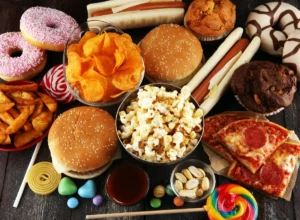 Lastly, the “fun foods” may also be a great and safe option for people with anorexia. These are foods that may not be as nutritious as the others on this list, but they can still be a part of a healthy diet. Fun foods can help to add variety and pleasure to meals. They can also help to increase caloric intake. Some safe and nutritious fun food options include:
Lastly, the “fun foods” may also be a great and safe option for people with anorexia. These are foods that may not be as nutritious as the others on this list, but they can still be a part of a healthy diet. Fun foods can help to add variety and pleasure to meals. They can also help to increase caloric intake. Some safe and nutritious fun food options include:
- cookies
- cake
- ice cream
- candy
- chips
These can be consumed as is, or they can be incorporated into a variety of recipes. Some common ways to utilize these in meals include:
- making a cookie sandwich with ice cream in the middle
- topping a piece of cake with fruit
- adding candy to a trail mix
- having chips alongside sandwich/wrap
It’s important to understand that there is no one “right” way to eat if you have this illness. What works for one person may not work for another. It’s important to work with a registered dietitian nutritionist (RDN) or other eating disorder specialist to create a meal plan that’s right for you.
Tips To Incorporate
Now that we know what anorexia-safe foods are and how they contribute to better recovery for people with eating disorders, let us now learn some tips which can help us incorporate these foods into our daily lives.
Make a plan
 This is the foremost step when you are trying to include anything new in your life, let alone changing your eating habits. Planning gives a sense of control and helps one focus on their goals. For starting to incorporate anorexia-safe foods in your diet, the planning procedure can look like this:
This is the foremost step when you are trying to include anything new in your life, let alone changing your eating habits. Planning gives a sense of control and helps one focus on their goals. For starting to incorporate anorexia-safe foods in your diet, the planning procedure can look like this:
- Listing down the anorexia-safe foods you want to include in your diet.
- Making a grocery list of the same.
- Including these foods in your meal prep for the week.
- Stocking up your pantry and fridge with these items.
All these can help you have a balanced kick-start.
Consider allergies and intolerances
If you have any allergies or intolerances, be sure to take them into account when choosing anorexia-safe foods. This is important because an allergic reaction or intolerance can worsen your anorexia symptoms. There are plenty of safe and nutritious foods that are suitable for people with allergies or intolerances. For example, if you’re allergic to dairy, you can choose from a variety of dairy-free alternatives, such as soy milk, almond milk, or coconut milk.
Start slow
You might be feeling motivated and want to change everything at once but that’s not how changes work. Trying to change everything at once is not only overwhelming but also sets you up for failure. Lasting changes are those that happen gradually. It is important to allow yourself space to adjust to new foods and eating patterns. So, start slow and make small changes one at a time.
For example, if you’re used to eating three meals a day, you could start by adding one or two snacks to your daily routine. Or, if you’re used to avoiding all fats, you could start by adding a small amount of healthy fats to your meals and snacks.
Make it enjoyable
Eating should be an enjoyable experience. So, make sure to include foods that you actually like in your anorexia-safe diet. This will help you stick to your meal plan and reach your goals.
If you’re not sure what foods you like, experiment with different foods and recipes. You might be surprised by what you end up liking. And, if you don’t like something, that’s okay. You can simply try something else. Including anorexia-safe foods in your diet does not have to be difficult or boring. By following these tips, you can make it a more enjoyable and sustainable experience.
Find what works for you
There is no “right” way to eat if you have anorexia. What works for one person may not work for another. It’s important to find an eating style that works for you and that you can stick with in the long term. For example, if you’re struggling to eat three meals a day, you could try eating five or six smaller meals instead. Or, if you find it difficult to cook meals from scratch, you could try using quick and easy recipes.
Monitor your progress
 Eating disorder recovery is a journey, not a destination. It’s important to monitor your progress and celebrate your successes along the way. This will not only help you stay on track but also give you a sense of accomplishment. You can monitor your progress in many ways, such as:
Eating disorder recovery is a journey, not a destination. It’s important to monitor your progress and celebrate your successes along the way. This will not only help you stay on track but also give you a sense of accomplishment. You can monitor your progress in many ways, such as:
- Keeping a journal of your thoughts and feelings about food and your body
- Weighing yourself regularly
- Tracking the number of meals and snacks you eat each day
- Taking photos of yourself
These are just a few examples. Find what works for you and stick with it.
Pre-cook your meals
Cooking when you have an eating disorder can be triggering or overwhelming. To make things easier, you can pre-cook your meals for the week. This will help you save time and energy. And, it will also make it more likely that you’ll actually eat the meals you’ve prepared.
When pre-cooking your meals, be sure to include a variety of anorexia-safe foods. This will help you get the nutrients you need and prevent boredom.
See food in a positive light
Trying to get back to normal eating while having or recovering from an eating disorder can feel daunting. But it’s important to see food in a positive light. Food is not the enemy. It’s fuel for your body and mind. While you might have negative associations with certain foods, it’s important to remember that all foods can be part of a healthy diet.
Practice mindful eating
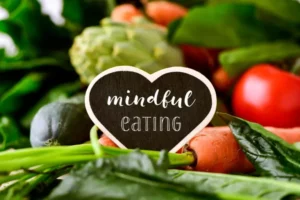 Eating isn’t only about putting food in your mouth. It is also about being present and aware of the experience. This is called mindful eating. To practice mindful eating, try to:
Eating isn’t only about putting food in your mouth. It is also about being present and aware of the experience. This is called mindful eating. To practice mindful eating, try to:
- Eat slowly and without distractions
- Express gratitude
- Focus on the taste, smell, and texture of your food
- Notice how your body feels before, during, and after eating
All of these contribute to a healthy and more positive approach to eating.
Try to eat with someone
Eating alone can be triggering for some people. If this is the case, try to eat with someone else whenever possible. This could be a friend, family member, or even a therapist.
If you don’t have anyone to eat with, there are other ways to connect with others while eating. For example, you could:
- Call a friend while you eat
- Join an online support group
- Attend a local meet-up group
Eating with others can help you feel more connected and less alone. It can also make meals more enjoyable.
Seek assistance from a professional
 Lastly, there is no shame in seeking assistance from a professional. If you’re struggling to make progress on your own, consider meeting with a registered dietitian or therapist who specializes in eating disorders. They can provide you with the support and guidance you need to make lasting changes. Making the decision to seek help is a sign of strength, not weakness. So, don’t be afraid to ask for help if you need it.
Lastly, there is no shame in seeking assistance from a professional. If you’re struggling to make progress on your own, consider meeting with a registered dietitian or therapist who specializes in eating disorders. They can provide you with the support and guidance you need to make lasting changes. Making the decision to seek help is a sign of strength, not weakness. So, don’t be afraid to ask for help if you need it.
There are many anorexia-safe foods that you can include in your diet. By following these tips, you can make the transition to normal eating a little bit easier. Remember, recovery is a journey. So take it one day at a time and be patient with yourself. You can do this!
Conclusion
In conclusion, we can say that anorexia is a serious eating disorder that can be difficult to recover from. However, there are various anorexia-safe foods that can help you in your journey to recovery. If you are struggling to make progress on your own, consider seeking professional help from a registered dietitian or therapist. With patience and perseverance, you can make a full recovery.
If you or someone you know is looking for psychological help, Therapy Mantra is here for you. We are the leading providers of online therapy and counseling. Our team of highly trained and experienced therapists can provide assistance at the most affordable rates. We also have a team of nutritionists providing nutritional counseling to manage food-related problems. Contact us today to learn more about our services. You may also visit our website to book an online therapy session or download our free Android or iOS app for more information.
